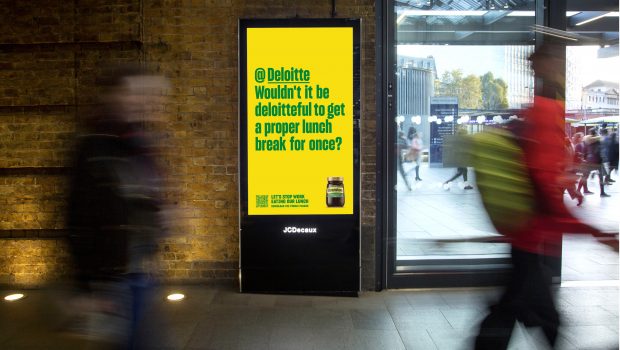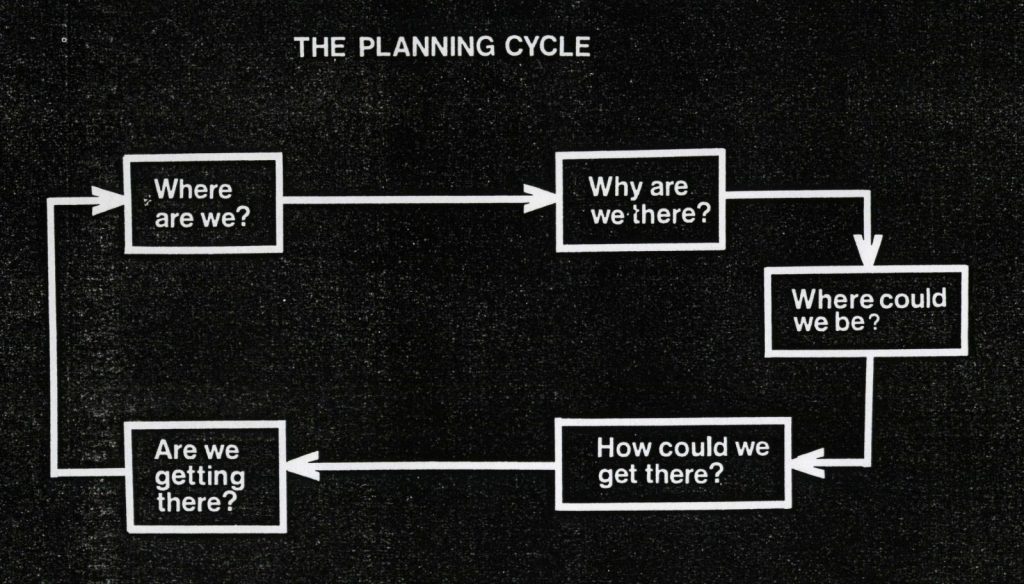Have we Lost Sight of the Fundamentals of Marketing? Interview with Dom Kozak, JCDecaux
by Mathew Broughton on 29th Nov 2022 in News

In association with JCDecaux.
In this exclusive interview with ExchangeWire, Dom Kozak, head of programmatic at JCDecaux, poses the question as to whether the industry has lost sight of the fundamentals of advertising, and how brand-building mediums are evolving to deliver results across the marketing funnel.
With all the technology and data that is available – have we lost sight of the fundamentals of marketing?
The goal of any advertising campaign has always been, and always will be, to capture attention and influence attitudes and behaviours. No matter what you’re selling, you’re advertising to people - people whose attention guarantees you nothing unless you do something when you have it.
JWT’s planning cycle from 1974 illustrates this point and is something that I refer to frequently when talking about campaign planning.

While these fundamental principles haven’t changed, data and technology have transformed how marketers identify the best opportunities to reach their most receptive audiences, how they buy the media those audiences are most likely to engage with, and how they measure success.
How are brand-building mediums transforming to deliver full-funnel results, and what does this mean for marketers when thinking about marketing strategy?
Brand-building mediums are transforming into full-funnel mediums because of data and technology. Take TV, audio, and OOH as examples:
- The invention of smart TVs, streaming devices, and internet-enabled set top boxes has enabled TV broadcasters and other TV content producers to capture user-level data about their viewers, build audience segments using that data and then create targeted advertising solutions for brands.
- The same applies for programmatic audio and the rise of podcasts and other streaming services like Spotify, and in the case of programmatic DOOH the additional audience data that can be layered into the campaign planning process – such as consumer data from Dunnhumby or airport audience data, as well as contextual signals like weather.
All the above transforms these traditional brand-building channels from ones where bookings need to be made in advance to channels that can be activated in real-time which is what makes them work across the whole funnel.
For marketers, this means that traditional lower funnel campaign planning now needs to encompass more channels and that the buying mechanics need to be interoperable - i.e., all channels need to be able to be bought in the same platform – your DSP (Demand Side Platform).
From a measurement perspective, marketers need to look at expanding cross channel measurement, attribution, and econometric modelling, so that the data that is being used to plan is mirrored in the measurement of performance otherwise you’ll never truly understand the impact of each channel.
When you look at the ecosystem as a marketer you see lots of moving parts. The tools and processes are forever changing; there’s always the next big opportunity, platform, tool, or data to get excited about. The important thing is not to lose sight of the fact that the success of marketing depends on being distinctive and showing up in a consistent way across touchpoints which becomes harder when there are more and more touchpoints – and most of those are digital which can create a disconnect with traditional channels. The digitisation of these channels is what is going to help brands attain the level of consistency required.
What are the applications for prDOOH in the top, mid, and bottom funnel?

PrDOOH builds on the location and contextual targeting that is at the heart of OOH, so when it comes to thinking about the various stages of the funnel and how prDOOH fits in we must look at the data integration options that are best placed to guide those desired outcomes.
But first it’s worth mentioning that there are some prDOOH tactics that are applicable across the whole funnel. For example, if your target audience is only in a certain location at certain times of the day programmatic dayparting enables you to optimise your investment and reduce wasted spend.
Upper-funnel – the awareness stage
Generating awareness is all about capturing attention and here programmatic tactics can really help marketers refine their messaging and run alternative creatives in different locations to reflect the demographics, sentiment, and mindset of the population in that area.
Additionally, mobile location data can be used to trigger campaigns to run or budgets to be upweighted when your target audience over indexes in any given area. This enables brands with smaller budgets to run nationwide campaigns and achieve mass reach without committing tens of thousands of pounds worth of budget.
Mid-funnel – the consideration stage
The consideration stage is all about building trust with consumers that your brand or product can fulfil their needs whether they be functional or aspirational, for example, sustainability. Research by Clear Channel and JCDecaux shows that OOH is the top media for delivering trust and driving consideration.
Thinking about the programmatic applications, there are many. For example, we know that consumers rely heavily on customer reviews, and the more recent and relevant the review the greater the impact it has on consideration. Programmatic pipes can be used to dynamically insert your product reviews into DOOH creative, and you can increase the relevancy by adding the name and location of the reviewer.
Lower funnel – the purchase stage
There are various tactics brands can employ to drive purchases from prDOOH. The most obvious are when you want to drive footfall and you include location information about the nearest place in which consumers can purchase your product, and QR codes that drive consumers to your website.
When thinking about these applications from a prDOOH perspective, you want to think about how your audience moves – when are they most likely to be in the locations in which they can act? Additionally, consider what external factors influence their decision-making? For example, is your audience more or less likely to buy your product in good or bad weather, do you have products that have greater or lesser appeal depending on the time of day? Use these insights to inform a programmatic creative optimisation strategy to maximise the effectiveness of your budget.
Getting sign off for embracing new channels can be challenging - does winning buy-in for new marketing initiatives boil down to building a better relationship with the CFO - if so, how can we do better?
It depends on what your relationship with your CFO is like in the first place! No matter what is going on in the world, or in your business, waltzing into a CFO’s office and blindly asking for budget is never going to work and it’s irresponsible.
The job of anyone in marketing is to show that effective marketing delivers better results and that the investments you propose will move the needle. It’s important to make sure that you and your CFO are speaking the same language and have a shared vision – without that you’re never going to be able to unlock budget.
Another factor that could be at play here is whether there is any tension between investment in innovation and tried and tested – you could have a great relationship with your CFO built through continuously proving your marketing delivers results but if that’s been through repeating the same plan year after year then that relationship won’t be enough to win you budget to do new things.
How important are measurement and cross channel attribution and how can marketers ensure each channel is being fairly represented in terms of their contribution to the outcomes of the campaign?
Today, measuring performance is non-negotiable, and without measurement capabilities new channels won’t take off. On its own, measurement of any single channel can be relatively simple and there are many, many, metrics that can be applied.
But marketing channels don’t exist in singularity. In reality, consumers are exposed to multiple channels on a daily basis and there’s no magic formula for calculating the level of influence each exposure had on the resulting behaviour. This makes cross channel attribution extremely important.
It isn’t straightforward though. In online marketing, we see a lot of multi-click attribution models which certainly have a place, but they don’t consider the contribution of offline channels. To combat this, many marketers turn to econometric modelling, but that requires a huge amount of expertise and it’s time-consuming meaning that opportunities can be lost in today’s fast-paced world.
To further complicate matters, a lot of marketers are fixated on the idea that media channels fall into one of two categories when it comes to objectives and measurement: brand or performance. This is where channels like TV and OOH that are traditionally thought of as brand channels but are increasingly being bought programmatically are often unfairly measured as there is an unrealistic expectation that because they’re being bought programmatically, they should measure up to channels like online video.
With prDOOH it’s important to set realistic expectations of what you're going to get in terms of measurement data over and above ‘normal’ DOOH. A test and learn approach is popular with
marketers that are new to the channel as it enables the exploration of numerous strategies in a fast, agile, and quantifiable way. At the end of the day, prDOOH is still OOH, there are no clicks, there are no view through rates, but savvy marketers work to find ways to measure how it impacts the performance of other channels.
BrandingDOOHMarketingOOHPerformanceProgrammatic








Follow ExchangeWire